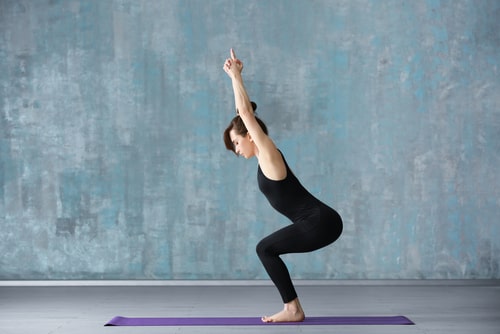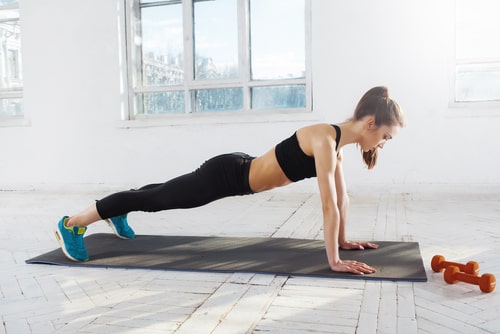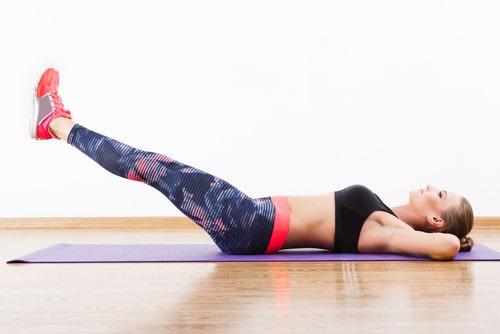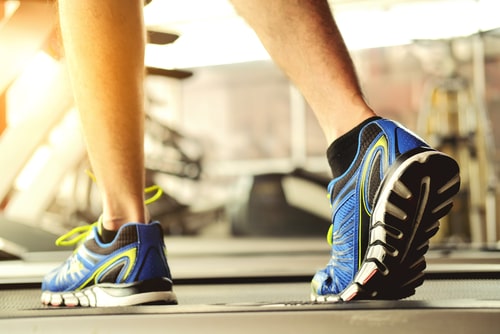Any runner, from a marathon runner to a casual jogger, can benefit from strength training. Running is incredible for cardiovascular health and fitness but adding strength training can help you build muscle that will improve your overall fitness and physical wellbeing.
In order to reach your full potential, you need to look at your health as a whole and make sure your workout and training regime is varied. Additionally, if you are prone to injuries while running, including strength and resistance training in your weekly workout routine will help with injury prevention.Â
What is strength training?
Strength or resistance training is a way of building muscle and improving resistance and stamina. Strength is the ability to produce force and get stronger. Usually, strength training involves lifting some form of weight, whether it be your own body weight or an added weight, in particular ways repeatedly to activate specific muscles.Â
Why is it important?
Strength training will improve your overall fitness level by strengthening your muscles, enhancing your range of motion, strengthening your joints and ligaments and boosting your overall stamina.
Strength training for running – benefits
Better running efficiency
One of the most important things when you are a distance runner, is to make sure you’re maintaining good running efficiency, essentially by keeping up a good running pace and form throughout the entire run. A lot of injuries, especially repetitive injuries, can occur if your form dwindles when your body starts to tire. So if you find that your long runs end in pain and discomfort instead of that ‘runners high’ try to start incorporating some strength training into your weekly workout schedule.
If you are considering training for an upcoming marathon, these tips will be especially useful for you.
To read more on marathon training:Â How To Train For a Marathon.Â
Gradually increases your pace
There is nothing wrong with going for a gentle jog down the river. But if you’re serious about keeping pace and pushing your body one step further and faster, strength training will get you there.
Strength training will enable your body to better your running economy (RE). RE relates to a measure of one’s oxygen consumption and output during a run. Essentially, RE is a person’s efficiency in converting oxygen into energy which propels them forward. The better a person’s running economy, generally the better their performance and pace.Â
Muscle strength also determines how long your strides are, which also improves your running efficiency.Â
Reduced risk of injury
Stronger muscles means you are less prone to injuries, and can recover faster. Pain and injuries can often be caused by muscle imbalances or muscle weaknesses. If you have been injured previously, make sure to consult a medical specialist such as a physical therapist.Â
Â
Simple strength exercises for runners
We have compiled some basic strength exercises which any runner at any level can incorporate to their weekly workout schedule. Keep in mind that every single runner will have different needs when it comes to your body and exercise needs. These are a great starting point however, for a personalised and specific training plan, it is always best to get advice from a health professional.
Basic squat
This exercise will strengthen your glutes and thighs.

Keep your back straight and lower yourself as you would sit in a chair. Use the muscles in your hips and thighs, avoid using your knees and don’t press them forward. Be mindful of your form, as if you do this incorrectly you can risk injuring your knees. You can find demonstrations on YouTube to ensure you are hitting the right form.Â
If you want to take this to the next level, try incorporating a weight into the routine. Hold a 1-10kg dumbbell facing downwards with both hands close to your abdomen, and bring it down with you as you squat down. The momentum of the squat will help with lowering the weight.
A more advanced version is to move to a jump squat. Squat down with the correct form and then jump back into the standing position. Repeat 10 times for 3 sets or more.
Walking lunges
Walking lunges will improve your balance, especially your single-leg balance. This will aid with building stride length and stability, allowing for your running pace to improve.

Use the motion of stepping forward and lean into your bent knee, keeping your spine as upright as possible. You can make this exercise tougher by holding equal weights on both sides of your body. Swap legs, and repeat as many times as you need.
Side lunges
Side lunges (also known as lateral lunges) are simple and can be done at home. Keeping your back straight and your bottom half pushed out as you were to sit in a chair, take long strides side to side with each leg, bending your knee when you make contact with the ground. Â

Adding a resistance band can add a more difficult element if you are up for the challenge.
Push ups
Although leg strength training is incredibly important to runners, you want to focus on the body as a whole, including your upper body. Doing push ups will help strengthen your back, arms and shoulders, which will in turn improve your posture as you run.

When doing push ups, make sure to keep your body straight and avoid straining your neck.
Step-ups
Step-ups will help you train your entire leg and all the muscles in it at the same time. This will help you improve your running power.

Use a box step and step up onto it, keeping your spine straight to maintain your balance. Step back down and repeat. Step up focuses on lifting your body weight, but can be made more challenging by wearing ankle weights.
If you want to include this exercise in your running routine in a more seamless manner, try using a staircase on your daily run.Â
Leg raises
Strengthen your hips and core muscles with this simple exercise.Â

Laying flat on your back, raise your legs to a 90 degrees angle. Keep them straight, and slowly with control, lower them to the ground. Avoid arching or lifting your back off the ground if possible.
Â
More advanced options
Of course the above listed exercises are designed to be simple, easy additions to your workout routine, which can be made more challenging by adding free weights. However, if lifting weights is already something you are adept to – absolutely go ahead with those deadlifts, chest presses and any other weighted exercises you like to do at the gym.Â
How to balance strength training and running?
Doing up to three 30 minute weight sessions per week will greatly enhance both your running stamina and performance. You opt to do these sessions on your days off from running, or as a running warm up.Â
You’ve got the knowledge, now get that power
Alongside strength training for running, make sure you get the other elements right. Get enough sleep, the right hydration, and good nutrition.You can always contact a professional such as a physiotherapist or personal trainer to help you figure out the right training program for you.
 Â Â Â Â Â
            Â
       
Always make sure you are using the right gear so you can perform at your best. You should have the right running shoes for the best support, the right running water bottles to keep you hydrated and the right running headphones to keep the tunes flowing. Find all of these and more, on our website.










